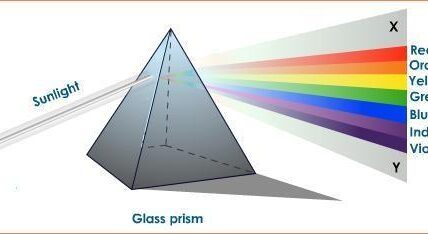Winds, Storms and Cyclones
Air Exerts Pressure
- It is the force exerted by the weight of the air particles on the body.
- Air exerts a certain amount of pressure on every single thing.
- When we pour some fresh water over a heated can which contains boiling water, then it is observed that the shape of the can gets distorted.
- This is because when fresh water is poured over the can, some steam in the can condenses into water. This reduces the amount of air inside the can, thereby reducing the pressure inside the can. Now, since the pressure outside the can is greater than that inside the can, the can gets compressed.

Relation between Wind (Air) and Air Pressure
- Wind speed depends on the difference in the pressure between the two regions. Wind moves from a region of high air pressure to a region of low air pressure.
- The greater the difference in pressure, the faster the wind moves.
- Increased wind speed causes reduction in air pressure and decreased wind speed causes increase in air pressure.
- On blowing air into the mouth of the bottle, the air near the mouth has higher speed. This decreases the pressure in that region. However, the pressure inside the bottle is high, which pushes the ball out. So, it is difficult to force the ball into the bottle.

Air Expands on Heating
- Air expands on heating and contracts on cooling.
- Warm air is lighter than cold air. It rises up and occupies a larger volume.
- A balloon gets inflated when the boiling tube is placed in hot water. However, the same balloon gets deflated when the tube is kept in cold water.

Wind Currents
- Wind currents are generated due to uneven heating of the earth.
Uneven heating of the equator and the poles
- The air in the equatorial regions becomes warmer due to the heating of the earth.
- This warm air rises and the cooler air from the regions in the latitude belt of 0-30 degrees on either side of the equator moves in.
- At the poles, the air is colder than that at the latitudes of about 60 degrees.
- The warm air at these latitudes rises up and the cold wind from the Polar Regions rushes in to take its place.
- This is how a wind circulation is set up from the poles to the warmer latitudes.
Uneven heating of land and water
- In summer, near the equator, the land warms up faster and the temperature of the land is higher than that of the water in the oceans.
- The air over the land gets heated and rises. This causes the winds to flow from the oceans towards the land. These are called monsoon winds.
- In winters, the direction of the wind flow gets reversed and it flows from the land to the ocean.
- The monsoon winds carry water due to which it rains.
| The word monsoon is derived from the Arabic word ‘mausam’, which means ‘season’. |
Thunderstorms
- The swift movement of the falling water droplets along with rising air creates lightning and sound. This is called a thunderstorm. Precautions to be taken during a thunderstorm:

Cyclone
- Water takes up heat from the atmosphere to change into vapour before forming clouds.
- When water vapour changes back to liquid form as raindrops, heat is released into the atmosphere.
- The heat released into the atmosphere warms the air around.
- This air tends to rise and causes a drop in the pressure.
- More air rushes to the centre of the storm. This cycle is repeated.
- The chain of events ends with the formation of a very low-pressure system with very high-speed winds revolving around it. This is called a cyclone.

Structure of a Cyclone
- The centre of a cyclone is called the eye of the storm. This is a calm region.
- The diameter of the eye varies from 10-30 km. This region is free of clouds and has light winds.
- Around this clear eye, there is a cloud region of about 150 km. In this region, there are high-speed winds and thick clouds with heavy rains.
- As we move away from this region, the wind speed decreases.
Destruction Caused By Cyclones

Different names of Cyclone

Tornadoes
- A tornado is a dark funnel shaped cloud which reaches from the sky to the ground.
- Most of the tornadoes are weak.
- A violent tornado can travel at a speed of about 300 km/hr.
- Tornadoes may form within cyclones.
- The east coastline of India is more
Safety Measures for Cyclones
| Rapid communication of warnings to all the government agencies, ports, fishermen, ships and general public should be done. |
| Construction of cyclone shelters in the cyclone prone areas need to be done. Administrative arrangements should be done for moving people quickly to safer places. |
| People should not ignore the warning issued by the meteorological departments through TV, radio and newspapers. |
| People should make necessary arrangements to shift the essential household goods, domestic animals and vehicles to safer places. |
| People should avoid driving on roads through standing water as floods may have damaged the roads. |
| Phone numbers of emergency services like police, fire brigade and medical centres have to be kept in hand. |

